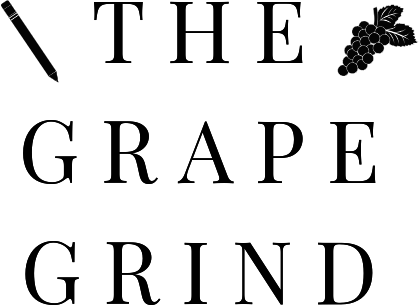
Picture this:
You’ve just poured yourself two glasses of Cabernet (what a treat!), one from the Margaret River in Australia and the other from Napa Valley in California.
You swirl both glasses and really get your nose in there. You sip each and note their differences. The first smells more like cedar and black fruit, while the second reminds you more of strawberry jam with a hint of green pepper. You enjoy both, but ultimately, you’ve determined that the Australian wine is more up your alley.
So, does that mean you prefer Margaret River Cab over Napa Cab? Maybe, but how much of the wine’s characteristics come from the grape itself, and how much comes from the winemaker’s preferences?
The answer isn’t cut and dry, nor should it be. It takes a village to make a wine, but if there’s a way to tease out the qualities of a wine while keeping in mind the winemaker’s influence, I’d like to find out.
The Grape

Perhaps it’s obvious, but when I say “grape,” I’m referring to the grape’s anatomy (thin-skinned vs. thick-skinned, warm-loving vs. cool-loving, etc.) and its terroir, or how the natural environment influences it.
These factors play the single most important role in a wine. It’s what distinguishes the ability of the grape to ripen and develop flavor. A winemaker has to consider these factors before deciding how to coerce the wine’s best features.
For example, the Saint-Émilion region of Bordeaux is known for making earthy, concentrated Merlot. This is partly due to the limestone soil, which contains high levels of minerals and retains heat, both of which jive with Merlot’s thin-skinned, loose clusters. Couple this with the strenuous laws regulating what can be done to a wine in this region, and you have a heavily grape-influenced wine.
So, how else can we discover the influence of the grape over the winemaker?
- Small production wines
These are wines made in small batches from small producers, often using solely estate-grown grapes. These wineries tend to be more open to experimenting and making single varietals and are more transparent with their winemaking practices.
- Minimal intervention wines
As the name implies, minimal intervention wines are wines made without the heavy hand of a winemaker. The grapes may be allowed to kick off fermentation on their own (rather than be inoculated with yeast) and are often aged in neutral oak so as not to heavily influence the wine.
- Niche varietals
There are likely a dozen or so varietals that you’ve tried but never even realized. A glass of Châteauneuf-du-Pape, for example, can have as many as 13 varieties in it. By isolating a single varietal (like Cinsault, a widely used grape in Châteauneuf), you can gain a better understanding of its role in blends.
- Taste multiple wines from the same region
Sampling multiple wines from the same region allows you to detect similarities and develop opinions in real-time, as opposed to over a lifetime.

The Winemaker
When I say “winemaker,” I’m both referring to the actual winemaker (here in Washington, he or she is usually wearing flannel and rocking a pair of well-worn Blundstones), as well as the rules and regulations many Old World winemakers must reconcile with if they want to make wine.
A winemaker has the final say in the wine. They decide when to harvest, when to press, the type of oak, how long to age, and which wines to blend. Even the best (or worst) vintages, can be completely transformed with the guidance of a winemaker.
For example, in the United States, few regulations are enforced on winemakers. In California, a wine must contain a minimum of 75% of a single grape to be labeled as a single varietal, and there’s no law dictating how much oak must be used or how long the wine must be aged. This gives the winemakers extraordinary freedom over the wine.

So, how else can we discover the influence of the winemaker over the grape?
- Blending
Blending is when a winemaker can showcase their palate and create new, unique wines that highlight the best (or hide the worst) of the vintage. When you taste a blend, you’re experiencing a story the winemaker wrote before it was ever bottled.
- “Big-name” higher volume vineyards
Wineries with prestigious, highly acclaimed winemakers often put the vintage in their hands to create more award-winning wines year after year, modifying the wine so that it fits in to a consistent style.
- Poor vintages & bulk wines
Bad weather can ruin a vintage, be it early snowfall, heavy summer rains, wildfires, you name it, and it takes a skilled winemaker to coax a bad vintage into something delicious. The same goes for bulk wine producers, who often get left with less quality grapes to turn into drinkable but inexpensive wines.

What does all of this mean?
There may not be a definitive way to understand exactly where the terroir of a grape ends and the guidance of the winemaker begins, but there are ways to gain a better, more comprehensive understanding of the two and how they marry to make a terrific glass of wine.
To learn more, your best bet is to taste more, ask questions, and seek out transparent wines that give you the full story to develop your personal palate “library”.
It’s a lifelong project, but at least there’s wine involved!



Olivia is a Washington-based freelance writer with a Level 2 Award in wines from the Wine & Spirit Education Trust. She has a passion for all things food, wine, and travel, though her heart belongs to the Pacific Northwest. When she’s not sipping on a glass of Washington Cab., she’s usually bikepacking, crocheting, or chillin’ in the sun with her dog Tater.
IG: @liv_eatslocal
Website: liveatslocal.com
